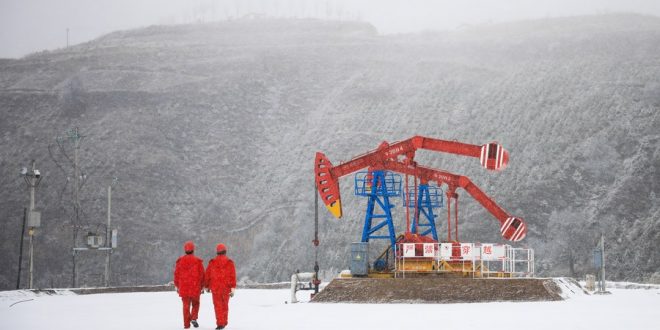With the high volatility of international oil prices, China’s year-on-year increase in spending on oil and gas imports may exceed $100 billion, while further pressuring downstream business operations in addition to commercial consumption, financial media outlet Caixin reported on Wednesday, citing multiple experts.
China may spend $100 billion more on importing crude oil in 2022 compared with 2021 as the sharp increase of global oil and gas prices impacts the cost of sourcing energy from overseas, Wang Nengquan, chief economist of Sinochem Energy, said at a forum held by the China Petroleum Circulation Association (CPCA) on Tuesday.
In 2021, China imported a total of 513 million tons of crude oil, a decrease of 5.4 percent year-on-year compared with 2020, with the total value reaching $257.3 billion, up 44 percent year-on-year, data from the General Administration of Customs showed. The average of import price therefore was about $502 per ton, or approximately $68.5 per barrel.
Industry insiders noted that the global oil prices may continue to surge to the end of the year especially following the ongoing Russia-Ukraine conflict.
Sun Renjin, an official from CPCA said at the forum that oil prices may remain at a high level in 2022, and are expected to fluctuate within the $90-120 per barrel range, adding that if the Russia-Ukraine conflict lasts for more than six months, oil prices may even surpass the historical highs of 2008.
The 513 million tons of crude oil imported by China is equivalent to about 3.76 billion barrels of crude oil in 2021, according to the Caixin report, meaning that China will have to pay an additional $3.76 billion per $1 per barrel oil price increase. Based on the same import data, if the oil price reaches $100 per barrel in 2022, additional costs will be equal to $118.44 billion.
Wang added that the surging price of crude oil will also transform the pressure to downstream enterprises and industries. As the downstream market is relatively fragmented and competitive, enterprises may not be able to fully pass the rising cost to consumers, resulting in compressed profit margins and negative impacts.
Meanwhile, the global supply of liquefied natural gas (LNG) has also been in short supply. According to a report released by the CNPC Economics & Technology Research Institute on Tuesday, the global gas prices in the three major markets skyrocketed, with Europe, Asia and the US gas prices increasing by 397 percent, 280 percent and 93 percent respectively.
The report further noted that in 2022, due to the impact of the Russia-Ukraine conflict, the Russian gas may be blocked from entering Europe in the west and will most likely flow east to Asia. Therefore, the US LNG will fill the vacancies in Europe, resulting a change in the global trade flow while the gas prices for the Eurasian market to continuously grow.
In 2021, China imported a total of 121.36 million tons of natural gas, including 78.9 million tons of LNG and 42.4 million of natural gas, customs data showed.
 Iran Energy News Oil, Gas, Petrochemical and Energy Field Specialized Channel
Iran Energy News Oil, Gas, Petrochemical and Energy Field Specialized Channel




